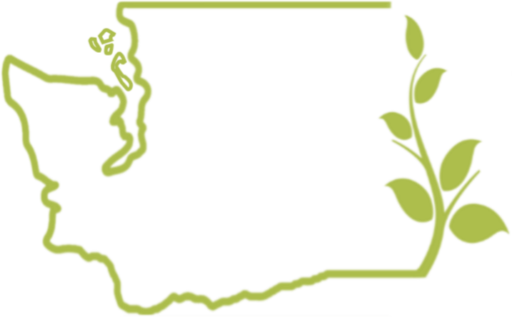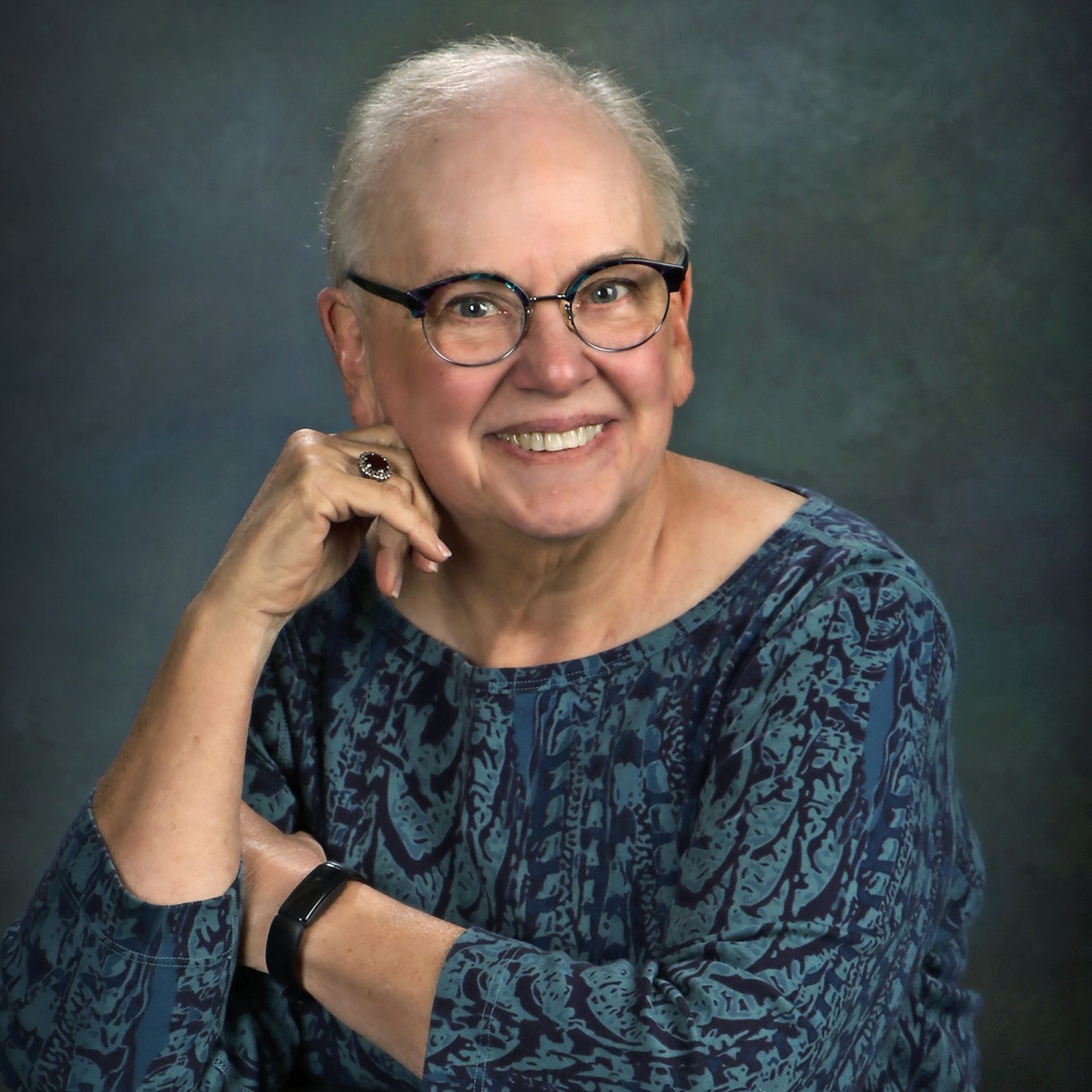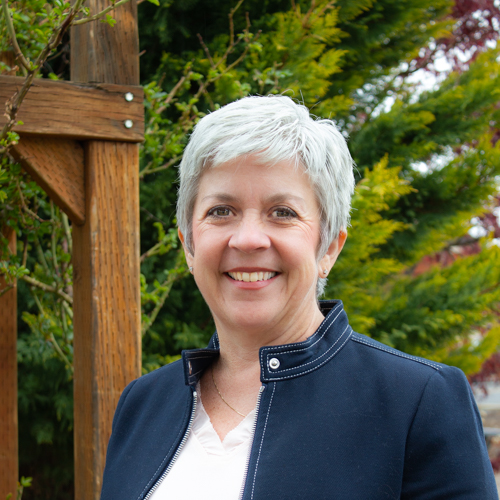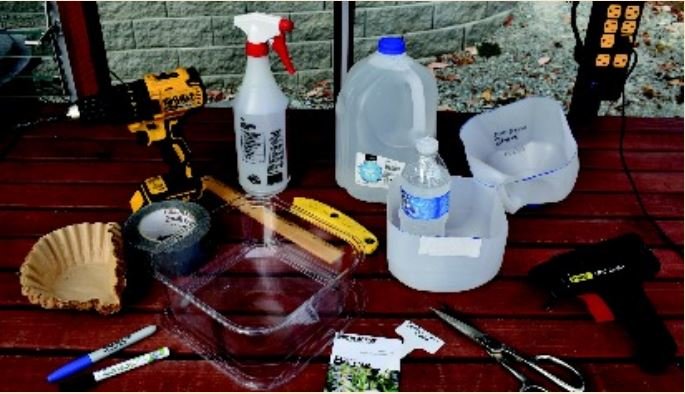
Seeds For Thought
A newsletter of the Master Gardener Foundation of Washington State
February 2023 Volume 23, Issue 1
From the President
~~ Tana Hasart, MGFWS President
Next >>>

Writing this message is like writing the first paragraph in a novel – ideas that need shaping, paired with an unknown end result. Here is an introduction, a look back, and a look forward. Aside from being the new MGFWS President, I am a Pierce County Master Gardener, military spouse, mother, grandmother, and higher education professional. Each attribute, as well as growing up in what would now be called a poor family, shapes my values and perspectives.
Our organization is strong because of significant contributions in the past. From board members to officers and partners, from early leaders and faculty to our most recent officers and president Don Enstrom, the MGFWS is viable because of your service and support. Thank you for creating opportunities for the MGFWS to grow and flourish.
Our organization is strong because of significant contributions in the past. From board members to officers and partners, from early leaders and faculty to our most recent officers and president Don Enstrom, the MGFWS is viable because of your service and support. Thank you for creating opportunities for the MGFWS to grow and flourish.
This year will see us engaging in work on your behalf. The 50th Anniversary of our Master Gardener Program is a time to reflect, celebrate, and strengthen support for chapters and counties. The 2023 Annual Education Conference, scheduled in Tacoma, provides an opportunity to gather, learn, and share best practices. A successful Endowed Chair Campaign ensures our organization lives out its mission into the future.
So, what will you see as a focus for this year? My first priority is to listen at the local and regional levels. Also “in the works” is the adoption of MGFWS annual goals – a first draft to be shared with the Board in February, then with state MGs. Our focus as officers is to ensure we are a fiscal and best-practice resource for you. I ask that you think about how you can inform, support, and strengthen your state foundation. Together we can make 2023 the most incredible year ever!
Happy Anniversary
~~ Jennifer Marquis, Statewide Program Leader

Happy Anniversary! On February 5, 1973, the first group of volunteers started their training to become WSU Extension Master Gardeners. Students learned about botany and plant physiology, and about soils and soil-related health problems in that day-long class. Looking through the history of our program, I found that our founders, David Gibby and Bill Scheer, referred to the Program as a project. While this may seem inconsequential, I find it to be very telling. At the time, Bill and David didn’t really know what they were starting. They truly viewed the training as a project with a defined start and end time. Little did they know that what they started was a sociologic grass-roots effort with widespread impact.
Nearly 50 years ago to the date of this publication, the Extension Master Gardener Program was born. Now in every state across our nation and in Canada, the United Kingdom, South Korea, and others, the Extension Master Gardener program is 100K plus volunteers strong teaching research-based horticulture and environmental stewardship education to empower and sustain diverse communities. In the early years of the program, volunteers focused their efforts on plant and insect clinics to help homeowners with their garden and landscape problems. Today, plant and insect clinics remain a distinguishing service provided to communities free of charge, but now we know that gardening plays a key role in individual and community health and well-being, and our teachings have adjusted to meet needs.

From plant and insect clinics to demonstration gardens, which I like to call outdoor classrooms, to youth outreach, to community and school gardens and rain gardens, Extension Master Gardener volunteers teach people to grow their own food, about the importance of soil health, clean water, biodiversity, pollinators, wildfire preparedness, and climate change. They bring people together at community gardens so communities can make decisions about how to make sure their family, friends, and neighbors have healthy foods to eat. They teach people the importance of clean water and techniques like installing a rain garden to help filter and clean water before it goes into our oceans, lakes, and streams.
Extension Master Gardener volunteers are boots on the ground, non-regulatory community educators who bring people together to address global, societal, and community problems. Come learn more about who we are, what we do, and why we do it and celebrate 50 years of the WSU Extension Master Gardener program at one of our events happening this year. Our kick-off is at the Puyallup Research and Extension Center on April 8, 2023. Regional events will be held on May 20, 2023, in Prosser at the Irrigated Agriculture Research and Extension Center; on June 10, 2023, in Wenatchee at the Tree Fruit Research and Extension Center and in Mount Vernon at the Northwestern Research and Extension Center. The culminating event is the WSU Master Gardener Advanced Education Conference sponsored by the Master Gardener Foundation of Washington State, September 27-30, at the Marriott in Tacoma. Mark your calendars, be on the lookout for event information and plan to join in the fun.
If you cannot join in the celebrations but want to learn more, please go to our website https://mastergardener.wsu.edu and read about our program priorities or about how to become an Extension Master Gardener. Find the 50 Years and Counting resources and the tools and SWAG available to purchase. Find information about how you can contribute to the future success of our Program. We are raising money for an endowed faculty chair who will be fully dedicated to the WSU Extension Master Gardener program. Under get involved on our website, check out the frequently asked questions or the how to donate page to help us reach our goal of $1.5 M. Cheers to each and every Extension Master Gardener and to all those who attend our workshops and classes. We can and do make real and important differences in our communities one person, one community, one yard, and one garden at a time. This golden anniversary will be one for the record books.
Jump Start Your Garden with Winter Sowing
~~ Kelly Maupin, Skagit County Master Gardener
The dark days of winter are upon us. As a gardener, this is the time of year we pull out the seed catalogs and start planning for next year. If you’re like me, you may already have been collecting and buying seeds throughout the summer and fall. Now is the time to prepare for winter sowing.
I first tried the winter sowing method last winter. It appealed to me because I can be a lazy gardener and I liked the ‘set it and forget it nature’ of this method of seed starting. I began with a few gallon jugs and before I knew it the number had blossomed to 40! I give full credit for this technique to Trudi Davidoff, who pioneered the method in upstate New York over 20 years ago.
The advantages of winter sowing include no need for lighting, no trays, tables, or shelves required, minimal required watering, upcycling containers, seedlings are weed free, and minimizing the risk of not dampening or hardening off well enough because seeds are stratified and germinate in their ‘milk jug’ environments naturally. The process is so easy–let me share it with you:

Materials you will need:
- Clean translucent milk or juice jugs without lids
- Other large, clean, rigid clear plastic containers like those used for roasted chicken, or salad greens with lids
- Utility knife or scissors
- Potting soil without moisture control or fertilizer
- Poly or duct tape
- Plant markers
- UV-resistant, waterproof marker
- Coffee filters
- Seeds
- Spray bottle and water bottle with holes in cap (for watering)
Steps for Winter Sowing:
- Turn the jug/container bottom up and cut or burn multiple small drainage holes in the bottom. I recommend adding multiple bottom-side drainage holes because in our climate having only one center drainage hole didn’t work well. To do this, I use an old glue gun, making sure to have good ventilation when burning plastic. A utility knife or drill will also work for creating drainage holes.
- Use a ruler to measure and mark a cut line 4” from the bottom of the jug. Mark the line with a marker all around the jug.
- Using a utility scissors or knife, carefully cut the jug along the line you have measured, leaving a hinge at the back of the jug under the handle so that the top portion will flip open while still attached.
- Place a coffee filter in the bottom of the jug (to keep the slugs out and hold soil in) and add pre-moistened potting soil to a level just below the hinge line.
- Label the container with the plant name and date in three places using a no-fade, UV, water-resistant marker. Label the bottom of the jug, the top of the jug, and the plant marker in the soil. Household Sharpietype markers are not recommended because the info will fade after months of being outside.
- Plant your seeds to the recommended depth on the packaging and moisten them with water from a spray bottle.
- Tape the jug closed using clear poly or duct tape around the circumference. Place jugs in the sun, a SE location is best. Snow or rain will do some of your watering for you, but make sure your spot has good drainage so they are not sitting in water.
- Check for moisture in the jugs at least once a week. Peek inside the jug, looking to see if the soil looks moist. Another way to check for adequate moisture is noticeable condensation on the inside hips of the jug. In the early days, I only watered about once a month. If they need watering, use the water bottle you’ve prepared with the holes in the lid, squirting a little water on to wet the soil. As the seedlings germinate and grow and the weather warms up, open the containers during the day and close them at night.
- When seedlings have pushed out their true leaves after the initial cotyledons, and the weather has warmed as needed, transplant them into the ground or a 4” pot.
What to Plant and When:
December through February: For our zones, this would start around December 21st, on Winter Solstice when the daylight is at its shortest. Examples of hardy annuals and perennials that can be started in winter include coneflower, columbine, sweet pea, lupine, native grasses, lavender, hollyhock, spinach, kale, thyme, oregano, and parsley.
March through April: Tender annuals and vegetables can be started. Examples include cosmos, zinnia, marigold, alyssum, lobelia, impatiens, beets, broccoli, basil, cilantro, and lettuce. Using this method, wait until April to start tomatoes, peppers, eggplant, melons, squash, and pumpkins.
When I started, I originally focused on starting perennials. Later, I sowed annuals and other seeds I had collected around my yard or traded with friends but be careful not to plant late tender annuals like cosmos and zinnias too early. Pay close attention to the general planting dates outlined above. Despite planting
some of these tender annuals too early, I still had a nearly 90% germination rate overall.
From last year’s trials, I also learned green algae can grow on the surface of the potting soil. This year I will add more drainage holes and use potting soil that does not contain moisture control products since PNW winters are typically ‘a bit moister’ than the winters in the eastern US where this method originated.
Another important reminder, not all seeds will germinate by May. Don’t be disappointed, be patient. Some seeds like columbine, milkweed, and others can take months or longer so don’t throw those milk jugs out too quickly–you may be surprised by what germinates late. As the days and nights grow warmer and the plants get bigger, you’ll open up the jugs.
RESOURCES:
2023 Advanced Education Conference
~~ Debbie Benbow, 2023 Conference Chair and Chelan County Master Gardener
<<< Previous | Next >>>
Planning for the 2023 WSU Master Gardener Advanced Education Conference is well underway. Our Planning Team Leads have been meeting since fall and are in the process of developing the program, creating a new website, and more. Stay tuned for exciting news over the next few months.
In the meantime, there are several team positions to fill. If you or someone you know are interested in serving in this rewarding endeavor, please reach out to me (Debbie Benbow) at debjeanbenbow@gmail.com or call me at 509-669-4822.
- Online AEC registration using Eventbrite
- We’re looking for someone to assist John Strong with Eventbrite Registration for the 2023 AEC. It involves basic computer skills.
- Important is regular routine attention to emails for notice of registrations and questions. Eventbrite is simple to administer for anyone who has basic web browser computer skills. There is also very robust online help in Eventbrite. A desktop or larger laptop computer is helpful. The interface is a bit large for tablet screens.
- Preparation for on-site conference check-in includes producing rosters of attendees and name badges. Very helpful is comfortable knowledge of Microsoft Excel and Word. Attendee information comes from Eventbrite in .csv format, which is easily used by a spreadsheet program like Excel. A good method for printing name badges is the MailMerge feature in Word.
- Procurement Lead
- Do you or someone you know have lots of great contacts and a knack for seeking donors? Are you a member of service groups such as Rotary, Kiwanis, etc.?
- Costs have gone up, and for the AEC to continue we need sponsors. We have developed a Sponsorship Package to be used for soliciting funds, vendors, exhibitors, and auction items.
- Vendors/Exhibitors Lead
- We’re looking for someone to lead a team to solicit vendors and exhibitors for the AEC. This is an exciting year for businesses to get involved with Extension Master Gardeners as we celebrate our 50th anniversary.

- Program Development
- Cathi Lamoreux is our Program Development Lead. Join her team to help recruit instructors for the AEC. As a team member you would be the point of contact for a small group of instructors from start to finish.
As we get closer to the Conference dates, there will be more positions to fill.
We are looking forward to seeing a full house at the Conference!